
Sir Alfred Joseph Hitchcock was an English film director. He is widely regarded as one of the most influential figures in the history of cinema. In a career spanning six decades, he directed over 50 feature films, many of which are still widely watched and studied today. Known as the "Master of Suspense", Hitchcock became as well known as any of his actors thanks to his many interviews, his cameo appearances in most of his films, and his hosting and producing the television anthology Alfred Hitchcock Presents (1955–65). His films garnered 46 Academy Award nominations, including six wins, although he never won the award for Best Director, despite five nominations.
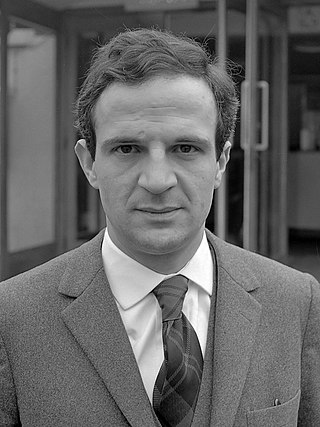
François Roland Truffaut was a French filmmaker, actor, and critic. He is widely regarded as one of the founders of the French New Wave. With a career of more than 25 years, he is an icon of the French film industry.
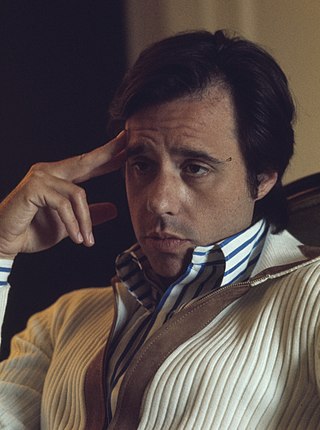
Peter Bogdanovich was an American director, writer, actor, producer, critic, and film historian. He started his career as a film critic for Film Culture and Esquire before becoming a prominent filmmaker as part of the New Hollywood movement. He received accolades including a BAFTA Award and Grammy Award, as well as nominations for two Academy Awards and two Golden Globe Awards.
Andrew Sarris was an American film critic. He was a leading proponent of the auteur theory of film criticism.

Shadow of a Doubt is a 1943 American psychological thriller film noir directed by Alfred Hitchcock, and starring Teresa Wright and Joseph Cotten. Written by Thornton Wilder, Sally Benson, and Alma Reville, the film was nominated for an Academy Award for Best Story for Gordon McDonell.
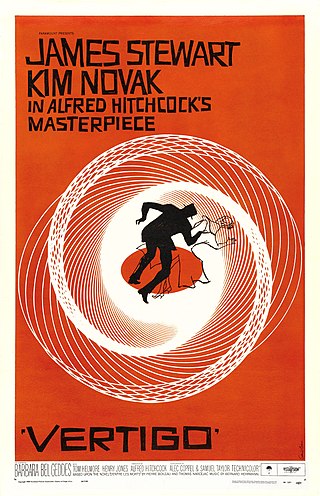
Vertigo is a 1958 American psychological thriller film directed and produced by Alfred Hitchcock. The story was based on the 1954 novel D'entre les morts by Boileau-Narcejac. The screenplay was written by Alec Coppel and Samuel A. Taylor. The film stars James Stewart as former police detective John "Scottie" Ferguson, who has retired because an incident in the line of duty has caused him to develop acrophobia accompanied by vertigo, a false sense of rotational movement. Scottie is hired by an acquaintance, Gavin Elster, as a private investigator to follow Gavin's wife, Madeleine, who is behaving strangely.

Marilyn Pauline "Kim" Novak is an American retired film and television actress and painter. Her contributions to cinema have been honored with two Golden Globe Awards, an Honorary Golden Bear, and a star on the Hollywood Walk of Fame.
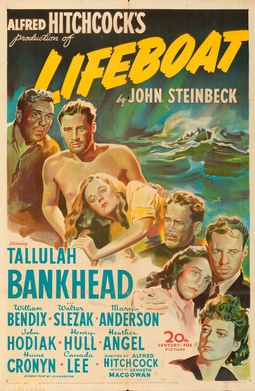
Lifeboat is a 1944 American survival film directed by Alfred Hitchcock from a story by John Steinbeck. It stars Tallulah Bankhead and William Bendix, alongside Walter Slezak, Mary Anderson, John Hodiak, Henry Hull, Heather Angel, Hume Cronyn and Canada Lee. The film is set entirely on a lifeboat launched from a passenger vessel torpedoed and sunk by a Nazi U-boat.

Nathalie Kay "Tippi" Hedren is an American retired actress. Initially a fashion model, appearing on the front covers of Life and Glamour magazines, she became an actress after being discovered by director Alfred Hitchcock while appearing on a television commercial in 1961. Hedren achieved great praise for her work in two of his films, including the suspense-thriller The Birds (1963), for which she won a Golden Globe Award for New Star of the Year, and the psychological drama Marnie (1964). She has appeared in over 80 films and television shows, including Charlie Chaplin's final film A Countess from Hong Kong (1967), the political satire Citizen Ruth (1996), and the existential comedy I Heart Huckabees (2004). Among other honors, her contributions to world cinema have been recognized with the Jules Verne Award and a star on the Hollywood Walk of Fame.

Shoot the Piano Player is a 1960 French New Wave crime drama film directed by François Truffaut that stars Charles Aznavour as the titular pianist with Marie Dubois, Nicole Berger, and Michèle Mercier as the three women in his life. It is based on the novel Down There by David Goodis.

Joseph McBride is an American film historian, biographer, screenwriter, author and educator. He has written books on a variety of subjects including notable film directors, screenwriting, the JFK assassination, and a memoir of his youth.

The Man Who Loved Women is a 1977 French comedy drama film directed by François Truffaut and starring Charles Denner, Brigitte Fossey, and Nelly Borgeaud. The film had a total of 955,262 admissions in France.

Walter Hill is an American film director, screenwriter, and producer known for his action films and revival of the Western genre. He has directed such films as The Driver, The Warriors, Southern Comfort, 48 Hrs. and its sequel Another 48 Hrs., Streets of Fire and Red Heat, and wrote the screenplay for the crime drama The Getaway. He has also directed several episodes of television series such as Tales from the Crypt and Deadwood and produced the Alien films.
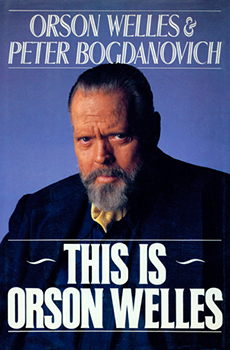
This is Orson Welles is a 1992 book by Orson Welles and Peter Bogdanovich that comprises conversations between the two filmmakers recorded over several years, beginning in 1969. The wide-ranging volume encompasses Welles's life and his own stage, radio, and film work as well as his insights on the work of others. The book was edited after Welles's death, at the request of Welles's longtime companion and professional collaborator, Oja Kodar. Jonathan Rosenbaum drew from several incomplete drafts of the manuscript and many reel-to-reel tapes, most of which had already been transcribed. Much of the dialogue, however, had been rewritten by Welles, often in several drafts.

Daisy Miller is a 1974 American drama film produced and directed by Peter Bogdanovich, and starring Cybill Shepherd in the title role. The screenplay by Frederic Raphael is based on the 1878 novella of the same title by Henry James. The lavish period costumes and sets were done by Ferdinando Scarfiotti, Mariolina Bono and John Furniss.
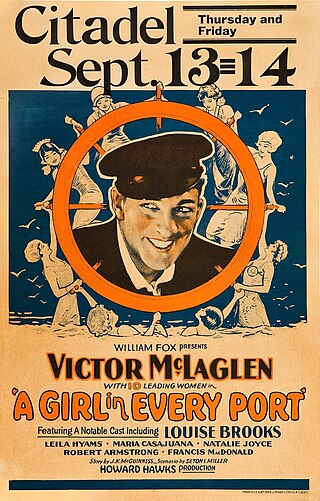
A Girl in Every Port is a 1928 American silent comedy film based on an original story by Howard Hawks, who directed the film as well. The feature stars Victor McLaglen, Robert Armstrong, and Louise Brooks. It was produced and distributed by the Fox Film Corporation, which later remade it as Goldie in 1931, with Spencer Tracy and Jean Harlow. A print of the 1928 movie exists at the George Eastman House and a DVD-R was released in 2002.
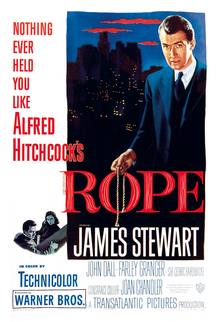
Rope is a 1948 American psychological crime thriller film directed by Alfred Hitchcock, based on the 1929 play of the same name by Patrick Hamilton. The film was adapted by Hume Cronyn with a screenplay by Arthur Laurents.

The Girl is a 2012 British television film directed by Julian Jarrold, written by Gwyneth Hughes and produced by the BBC and HBO Films. The film stars Sienna Miller as Tippi Hedren and Toby Jones as Alfred Hitchcock. It is based on Donald Spoto's 2009 book Spellbound by Beauty: Alfred Hitchcock and His Leading Ladies, which discusses the English film director Hitchcock and the women who played leading roles in his films. The Girl's title was inspired by Hitchcock's alleged nickname for Hedren.
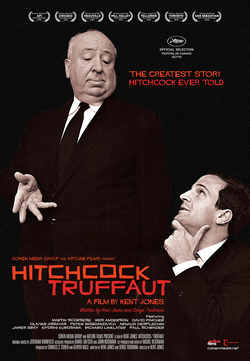
Hitchcock/Truffaut is a 2015 documentary film directed by Kent Jones.

Hitchcock/Truffaut is a 1966 book by François Truffaut about Alfred Hitchcock, originally released in French as Le Cinéma selon Alfred Hitchcock.



















